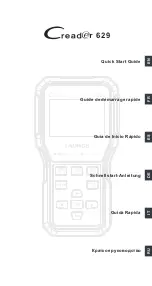
Kärcher TRS-SSG • Operators • 9.801-330.0-J
OPERA
TOR’S MANU
AL
PRESSURE W
ASHER
6
IMPORTANT TRAILER SAFETY INFORMATION
Automotive Engineers (SAE) specifications. Standard
two-inch diameter ball should be within the limits of
2.000-inches to 1.970-inches. Balls larger than 2.000-
inches will not readily fit the coupler. A two-piece coupler
ball is not recommended.
If the coupler becomes damaged it must be repaired
or replaced before towing. When the coupler is placed
on the ball, the latch should close firmly. Keep the latch
mechanism lightly oiled and clean.
Improper engagement of the coupler and ball can cause
damage if the vehicles separate in transit, thus, caution
must be exercised to insure a secure hook-up. Lower the
coupler onto the ball with the coupler latch in the vertical
position. Continue to lower the trailer tongue until the jack
clears the ground, then flip the coupler latch to its locked
(horizontal) position. At this point visually observe that
the ball is fully engaged in the ball hitch. An even better
check to make sure the two are fully engaged is to raise
the tongue of the trailer again using the jack. Raise until
the ball hitch connection starts to raise the rear of the
tow vehicle. If the connection was not properly made, the
ball and socket will separate as the tongue of the trailer
is raised.
Safety Chains
Listed in the chart below are the different class sizes
of safety chains and the rated load each chain must
be capable of withstanding. Your trailer is equipped
with safety chains that meet the requirements of D.O.T
Regulation 393.70.
TRAILER CLASS
TRAILER WEIGHT
GVWR IN LBS.
MINIMUM BRAKING
STRENGTH IN LBS.
I
to 2,000
2,000
II
2,000 to 3,500
3,500
III
3,500 to 5,000
5,000
IV
5,000 to 7,000
7,600
WARNING: Failure to properly attach safety chains
between the trailer and tow vehicle can result in a
runaway trailer.
WARNING: To avoid accidents, before trailering:
•
Hitch only to ball size marked on coupling.
•
Ball clamp must capture ball and lever or hand
wheel is fully clamped.
•
Cross safety chains under coupling.
•
Allow only enough slack for turns.
Bottom View
The safety chains on your trailer are an added insurance
that it will not become detached from the tow vehicle. All
safety chains are provided with an added clasp to keep
them from becoming accidentally detached from the tow
vehicle. Your trailer hitch on the tow vehicle should
have two attaching holes or rings for attaching the safety
chains, preferably one on each side of the ball hitch.
Crisscross the chains under the tongue, the chain on the
left side of the trailer tongue attached to the right side
of the ball hitch, the chain on the right side of the trailer
tongue attached to the left side of the ball hitch.
This prevents the trailer tongue from dropping to the road
should the coupler or ball hitch fail. The chains should
be rigged as tight as possible with just enough slack to
allow tight turns to be made. This can be accomplished by
twisting the chain hook in a clockwise or counterclockwise
direction thus twisting the link spacing and making the
chain shorter. Also by keeping your chains as short as
possible you prevent them from dragging on the road
and wearing the chain links. If for any reason you find
it necessary to replace a safety chain, use only original
equipment.
Load-Carrying Capacity
Located on the front left-hand side of the frame, (either
the inside or the outside) is the VIN (Vehicle Identification
Number) tag. It will show the GVWR (Gross Vehicle Weight
Rating) which is the maximum load that can be applied
to the tires on the trailer. The GVWR and the carrying
capacity of the trailer are based on the tire size installed
on the trailer.
The GVWR is the maximum carrying capacity of the trailer
with its respective tires. It may not necessarily equal the
total GVWR of the trailer less the empty weight of the
trailer because there may be another controlling factor
such as frame strength that reduces the carrying capacity
to what is listed on the VIN tag.
The tire label will list the tire size that was installed on
the trailer as original equipment when it was sold to you,
the consumer. It also lists the maximum carrying capacity
of the trailer.







































